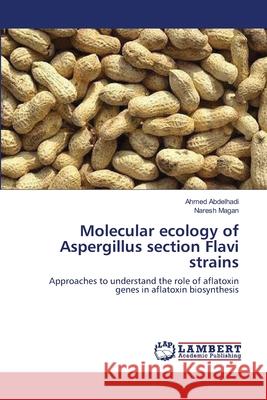Molecular ecology of Aspergillus section Flavi strains » książka
Molecular ecology of Aspergillus section Flavi strains
ISBN-13: 9783659170744 / Angielski / Miękka / 2012 / 188 str.
The main objective of this study was to determine and understand how environmental factors influence growth and the regulation of AFB1 production, and to gain knowledge of the correlation of ecophysiological conditions with toxin gene expression of the aflatoxin genes in relation to phenotypic production. In this study the following studies have been carried out: Effect of combinations of water activity x temperature interactions on growth, and sporulation, and partitioning of AFB1 into spores, mycelium and medium using A. flavus NRRL 3357. Use of a microarray and real-timePCR to examine the effects of aw x temperature interactions on a conducive YES and to examine the relationship between the expression of the genes and phenotypic aflatoxin production.A relative quantification system (RQ-PCR) was used to monitor and correlate the temporal activity of the aflD gene of Aspergillus flavus using real-time PCR in relation to phenotypic AFB1 production and populations of A. flavus in stored peanuts. To examine the potential of three designed siRNA sequences to target the mRNA sequence of the aflD gene for using RNA silencing technology to control aflatoxin production.
The main objective of this study was to determine and understand how environmental factors influence growth and the regulation of AFB1 production, and to gain knowledge of the correlation of ecophysiological conditions with toxin gene expression of the aflatoxin genes in relation to phenotypic production. In this study the following studies have been carried out: Effect of combinations of water activity x temperature interactions on growth, and sporulation, and partitioning of AFB1 into spores, mycelium and medium using A. flavus NRRL 3357. Use of a microarray and real-timePCR to examine the effects of aw x temperature interactions on a conducive YES and to examine the relationship between the expression of the genes and phenotypic aflatoxin production.A relative quantification system (RQ-PCR) was used to monitor and correlate the temporal activity of the aflD gene of Aspergillus flavus using real-time PCR in relation to phenotypic AFB1 production and populations of A. flavus in stored peanuts. To examine the potential of three designed siRNA sequences to target the mRNA sequence of the aflD gene for using RNA silencing technology to control aflatoxin production.











